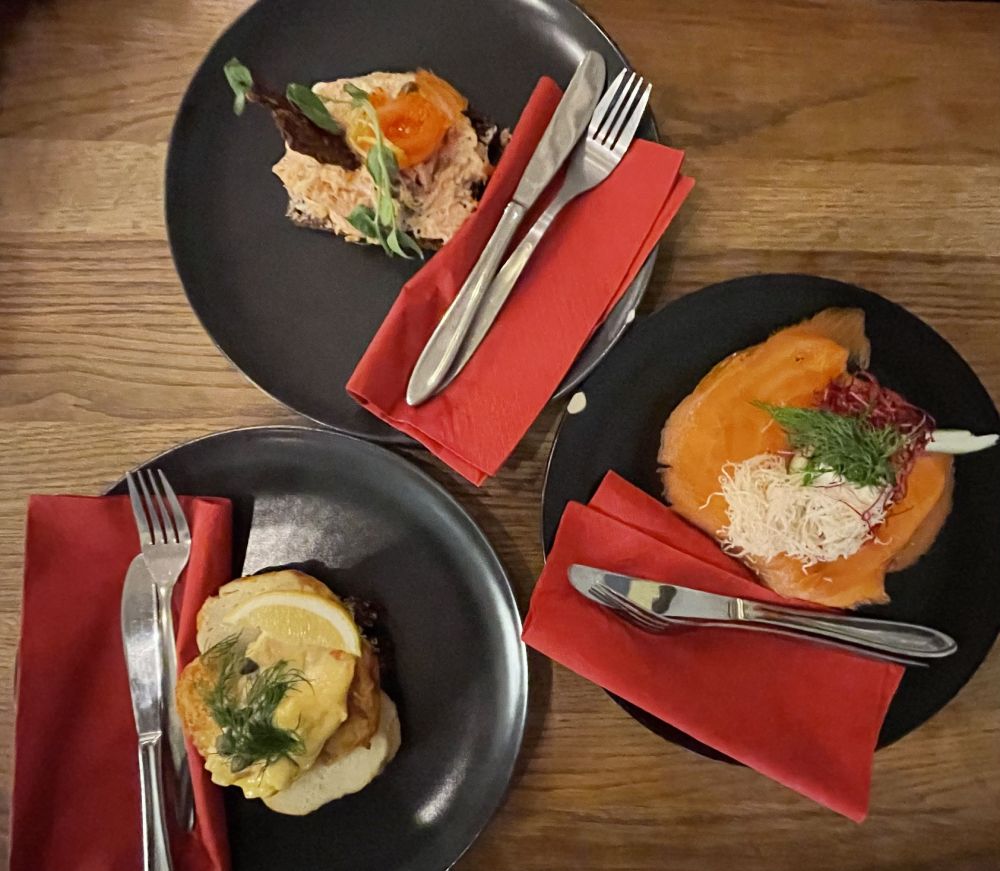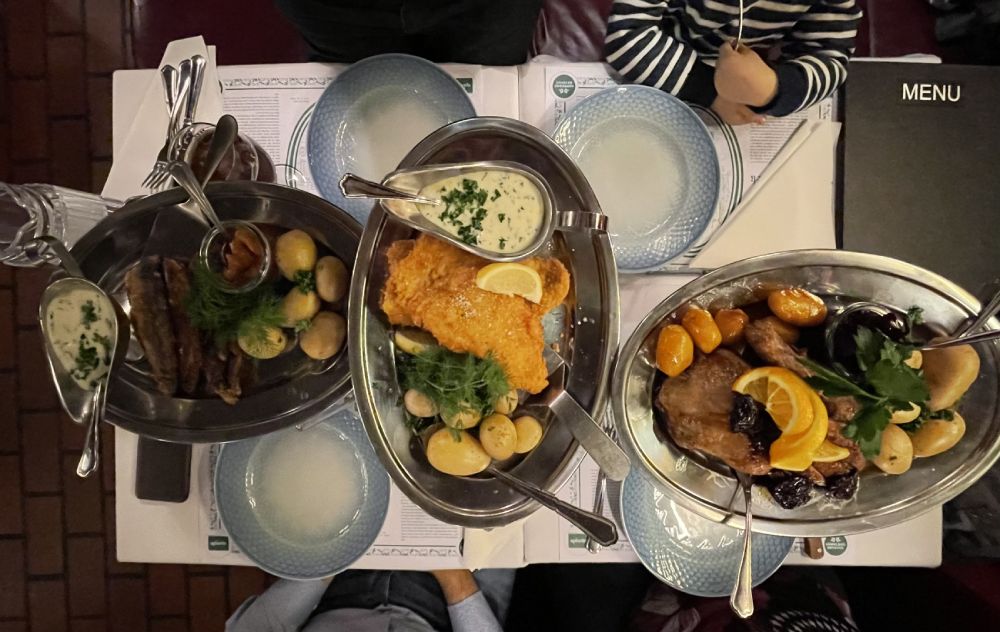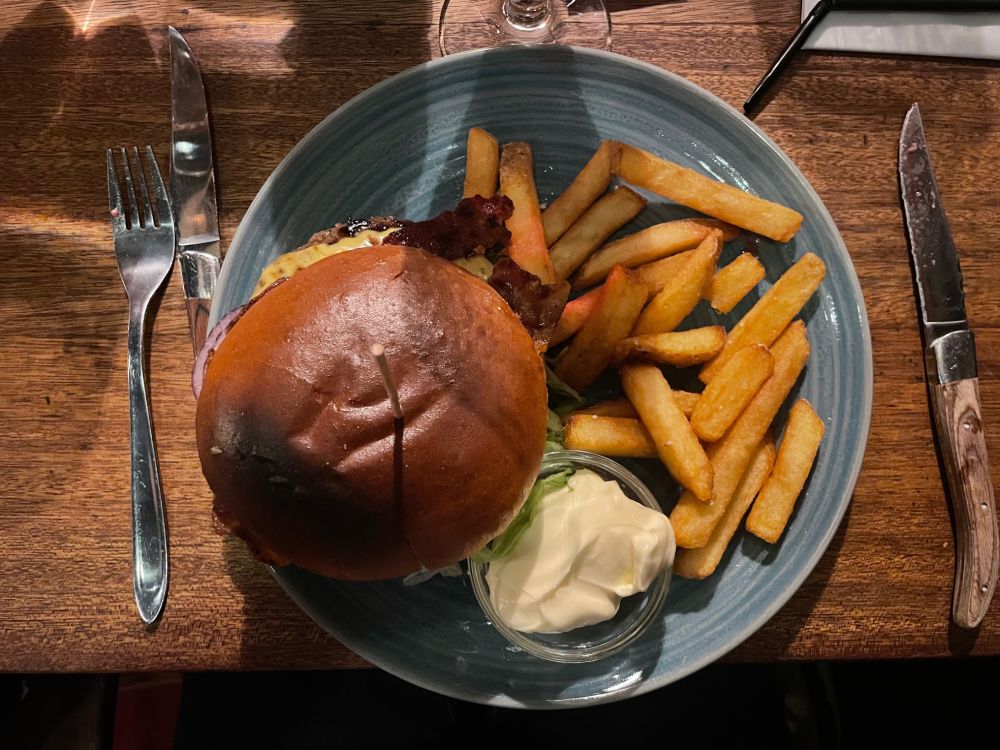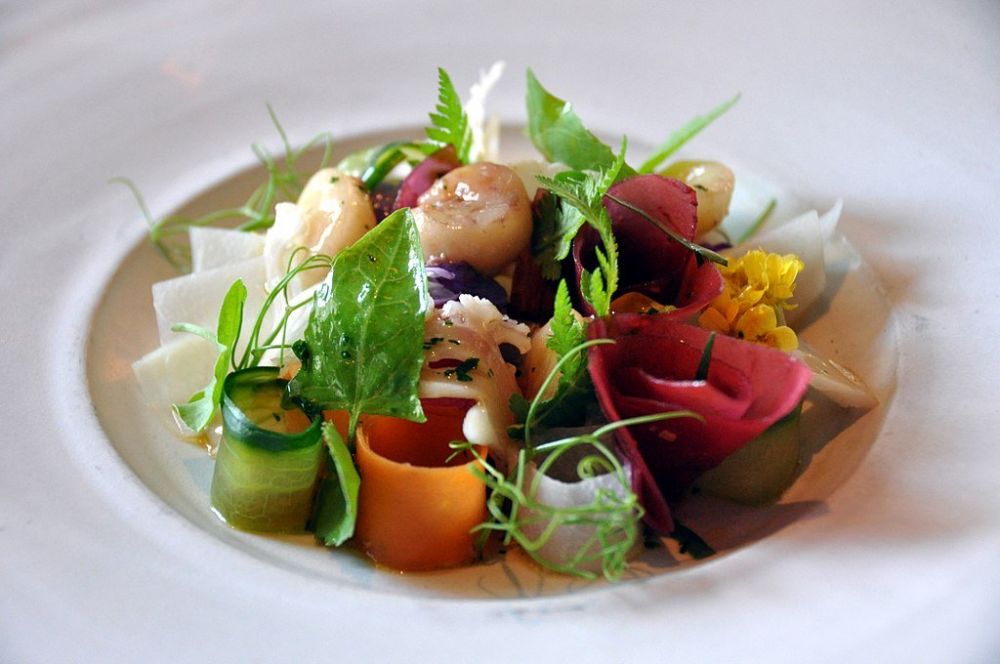Danish cuisine may not be as famous as others, but it is worth trying. The cuisine is known for its innovative cooking techniques, delicious roasts, and mouth-watering sandwiches that are not only delicious but also visually appealing. If you’re planning a trip to Copenhagen, check out this guide to get a taste of the best food the city has to offer.
PLAN YOUR TRIP TO COPENHAGEN
Get the Copenhagen Card for free entry to 90+ museums and attractions, including the must-see Tivoli Gardens and canal tour, discounts in top-notch restaurants, and free transport by bus, metro, and train.
To stay connected in Copenhagen, buy an Airalo eSim online for phone and data coverage during your trip to Denmark.
Table of Contents
Smørrebrød: the typical Danish lunch in Copenhagen
To begin a journey into the taste of Danish cuisine, the first dish to try is undoubtedly the smørrebrød, which means butter and bread, smør og brød. However, don’t expect simple buttered bread because this dish will leave you speechless for its presentation.
Smørrebrød is typical Danish cuisine and is the ultimate cold lunch. In Copenhagen, you can find them in almost every café. Once you taste one, you will want to try all the variations because they are so tasty despite their apparent simplicity. I tried smørrebrød at the Tivoli Food Hall, an area dedicated to international cuisine inside the Tivoli Gardens.
What’s inside the smørrebrød
The base of smørrebrød are slices of bread, usually rye, but also white with seeds, buttered and topped with anything from meat to shrimp. On the top sauces, sliced vegetables or boiled eggs are tasty decorations. There are over a hundred traditional combinations to stuff them, and every restaurant prepares them in different flavours.
Marinated herring is very popular among Danes, but variations with other smoked fish, such as salmon, eel, mackerel, or fish balls, are also popular. I have tried several and enjoyed them all, especially the salmon ones.
Those who do not like fish can choose smørrebrød with cheese, tomato, boiled egg and mayonnaise. Alternatively, there are versions with diced or sliced cold cuts and even leverpostej pork liver pâté, ironically called dyrlægens natmad, the vet’s night snack.

Danish cuisine: what are the typical dishes
Apart from smørrebrød, traditional Danish cuisine includes both fish and meat dishes. If you like meat, you can find the traditional pork roast with rind, called flæskesteg, in almost every restaurant. On the other hand, the Danish pork loin steak is called mørbradbøf.
Fish dishes consist mainly of cod, herring and mackerel, often smoked or marinated. With its vast coastline, you can expect an excellent choice of fish in all restaurants in Copenhagen. A trip to Denmark can take your fancy to herring cooked in many different ways. Here, fish & chips are called fiskefilet and served with a delicious vegetable-enriched mayonnaise called remoulade.
As for sweets, Copenhagen is full of bakeries that churn out different kinds of pastries and brioche every day. During my trip, I expected many more sweets, while the breakfast at my Danmark Brochner hotel was mainly savoury, with only a choice of croissants.
Danish pastries are called Wienerbrød, ‘Viennese bread’ in Denmark. The name seems to come from a Danish baker who moved to Austria and then returned to the motherland with the recipe for the perfect brioche!

Beer culture in Denmark
The first brewery in Copenhagen dates back to 1525, and Denmark is famous for its many different types of beer, called øl. Today, Denmark is home to the headquarters of the Carlsberg Group, one of the largest multinational beer companies in the world.
Carlsberg on tap in Copenhagen tastes better than the canned version in other European countries. A spicier amber version of the lager, known as the Christmas beer, is available, only sold seasonally during Christmas.
Apart from Carlsberg and Tuborg, ubiquitous in Denmark, in Copenhagen’s pubs and bars, you can find beer from local microbreweries and imported beers from Belgium. If you’re a beer lover, try some small niche productions available only in the area around the brewery.
For those visiting Copenhagen, Færgerkroen Bryghus in Tivoli Gardens is a great local brewery with a kitchen. The dining room overlooks a lake in the middle of the park, and beer enthusiasts can also see the brewing room upon entering the premises.

The New Nordic Culinary Movement
The New Nordic Cuisine movement has recently transformed and influenced Danish cuisine. This movement has brought a fresh, innovative approach to traditional Scandinavian food, using local and seasonal produce to create new combinations and cooking techniques. The New Nordic Food Manifesto, created by food activist and entrepreneur Claus Meyer and signed by several Scandinavian chefs in 2004 in Copenhagen, enshrined the values of this culinary movement.
In Copenhagen, several restaurants serve New Nordic Cuisine. The most well-known is Noma, an abbreviation of Nordisk Mad, which means Nordic food. Noma has won numerous culinary awards. Another popular restaurant is Geranium, also in Copenhagen. However, other gastronomic destinations outside the capital are also worth a visit.
Noma and Geranium are among the top 50 restaurants in the world. If you want to eat at these restaurants, you must make a reservation in advance. However, be aware that prices are much higher than those of European restaurants in the same category. Nevertheless, if you’re willing to spend the money, a Nordic neo-gastronomy dinner in Denmark is an experience you will remember.

Where to eat typical Danish food in Copenhagen
In Denmark, people dine earlier than in southern European countries. In Copenhagen, for example, restaurants open around 7 pm and close by 9 pm, sometimes even earlier, especially outside the centre. Consider these times when planning your daily itinerary because you risk ending up without dinner.
Eating out in Copenhagen is very expensive because Denmark is more expensive than other continental European countries. Consider about three times what you would spend in another European capital in your dining budget.
The food in Denmark is of excellent quality everywhere, so to save money, you can occasionally have lunch in chain cafeterias. Or, if you have rented a flat, buy some delicatessen products in supermarkets.
However, I suggest you try a few typical restaurants and breweries to taste the smørrebrød and understand Copenhagen’s gastronomic scene. Among the places not to be missed, I recommend Det Lille Apotek, Denmark’s oldest restaurant. It is famous because Hans Christian Andersen dined there regularly.
There are several breweries in Copenhagen where you can eat well and enjoy seasonal beers, such as Christmas beers if you visit the Danish capital in November or December. Inside the Tivoli Gardens, I recommend the Færgerkroen Bryghus brewery, which offers a good selection of craft beers.
Where to stay in Copenhagen
There are plenty of options for a Scandinavian-style stay in Copenhagen, including boutique hotels and designer flats. I stayed at Hotel Danmark by Brøchner Hotels, offering city views from its rooftop terrace. The 25hours Hotel Indre By is another recommended stylish hotel with a restaurant, bar, and sauna. If you’re on a budget, consider staying at Generator Copenhagen, a hostel with private rooms and dormitories, a late-night bar, and free Wi-Fi.
I hope this guide to Danish gastronomy has inspired you to try out some of the delicious Danish dishes. Feel free to write in the comments which ones you found most delightful during your foodie adventures in Denmark and Copenhagen.
